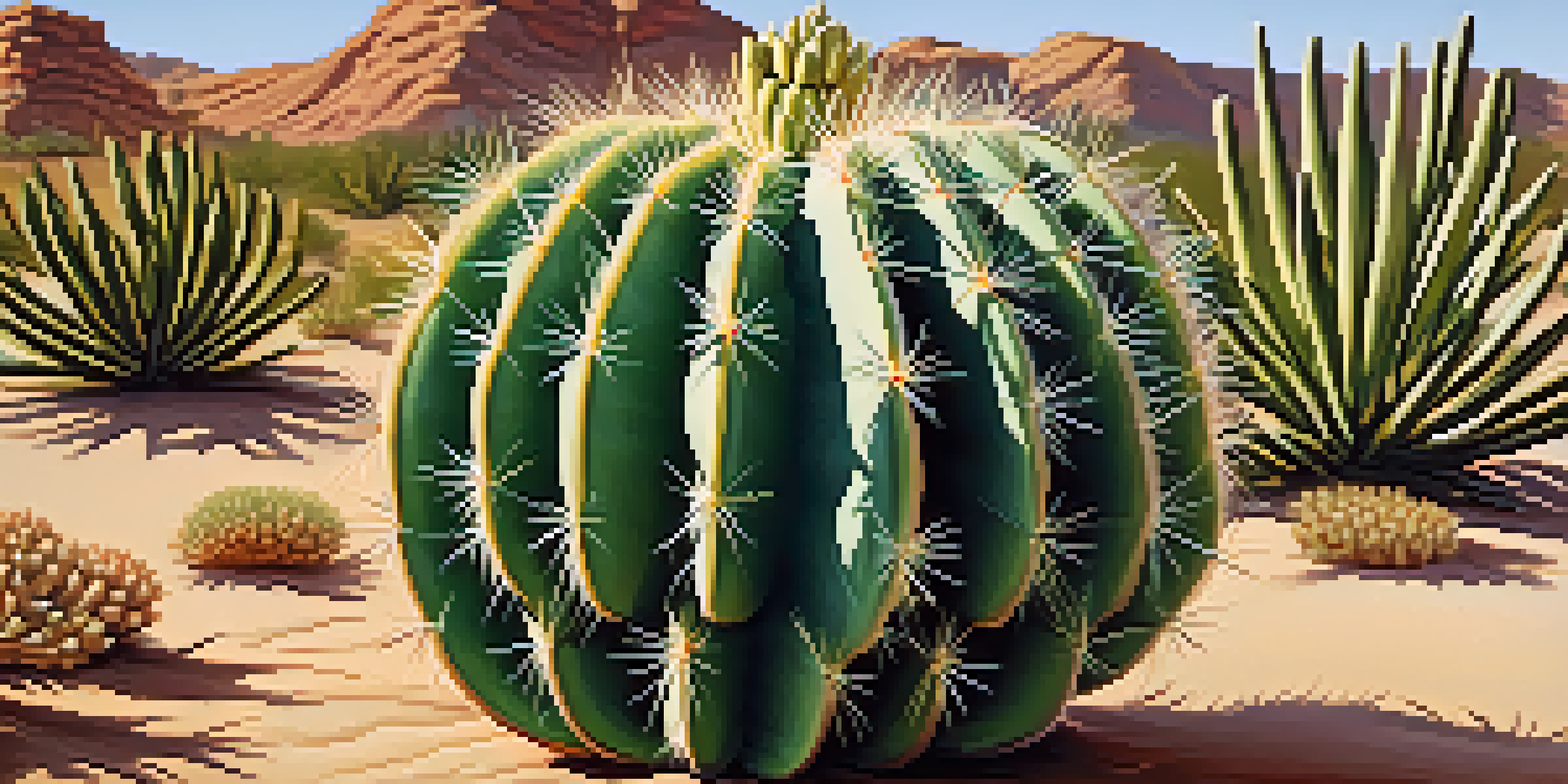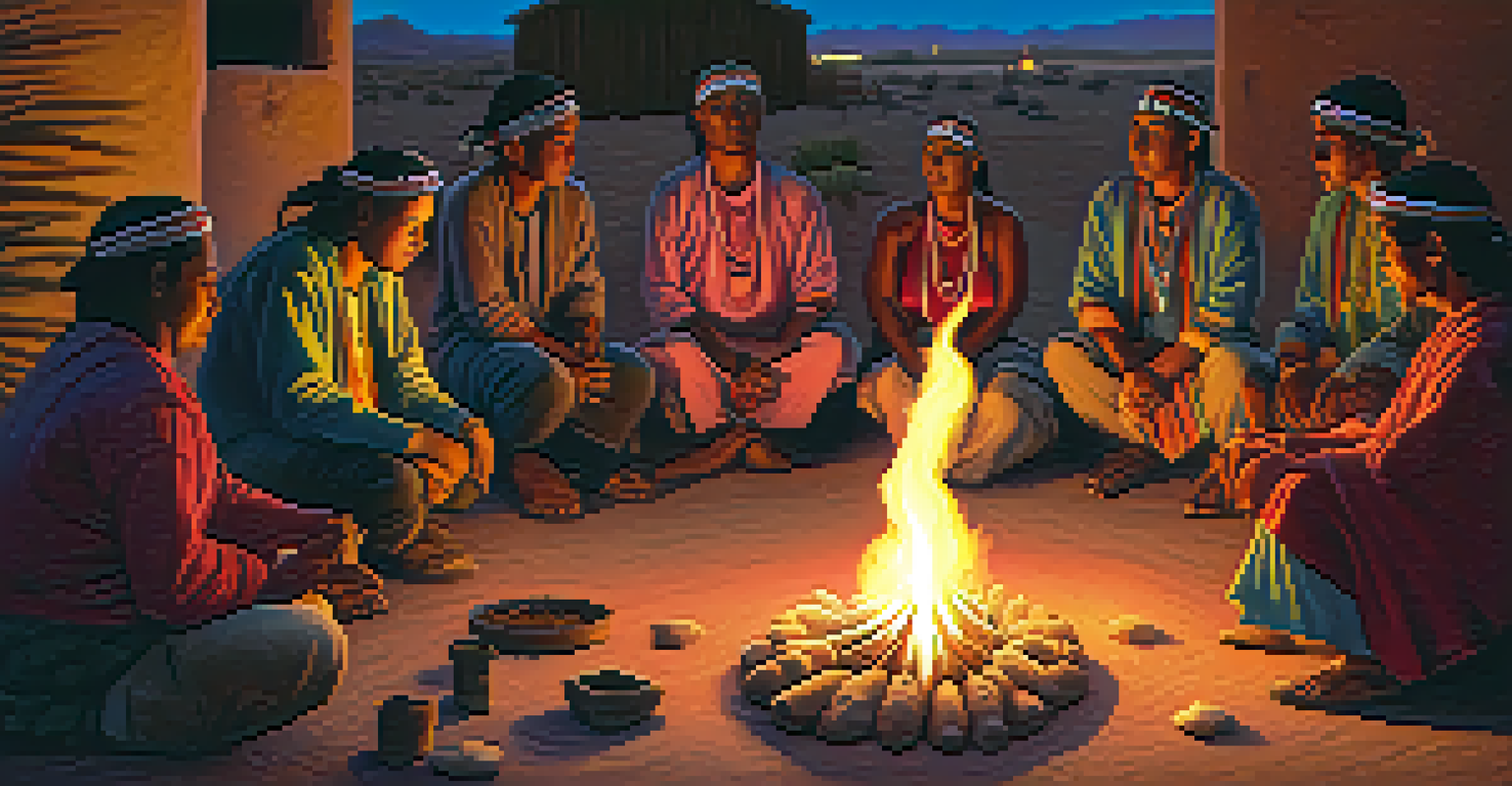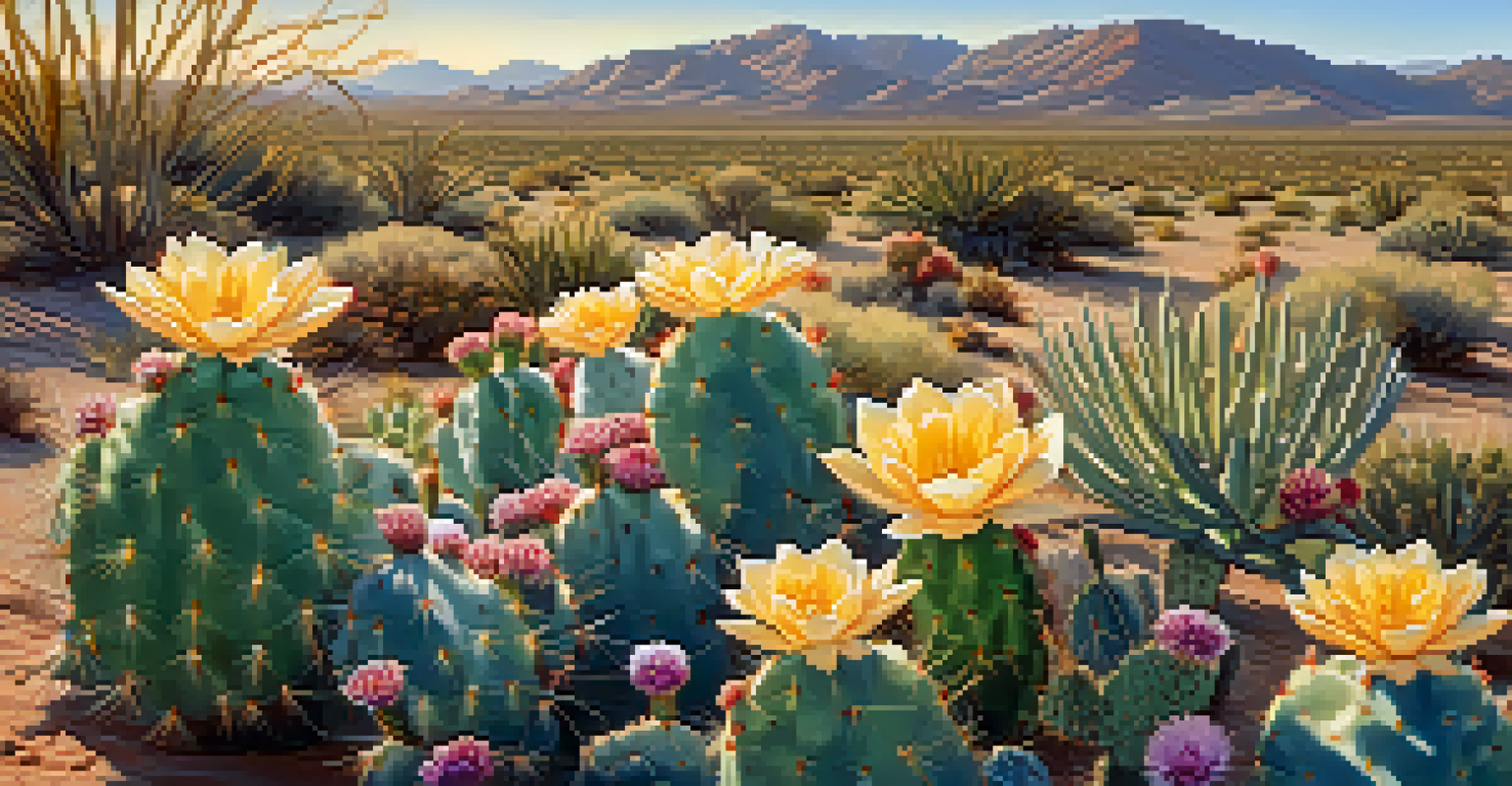Exploring Peyote: A Bridge Between Science and Spirituality

Understanding Peyote: More Than Just a Cactus
Peyote, a small cactus native to Mexico and the southwestern United States, is famous for its psychoactive properties. Unlike your typical houseplant, this cactus has been utilized for centuries by Indigenous communities for both medicinal and spiritual practices. Its active compound, mescaline, is what gives Peyote its unique ability to alter perception and consciousness.
Peyote is a sacred plant that has long been used as a tool for spiritual growth and healing by Indigenous peoples.
Beyond its cultural significance, Peyote's biological makeup is fascinating. It thrives in arid environments, adapting to harsh conditions, which can be seen as a metaphor for resilience. This adaptability not only highlights the cactus's survival skills but also reflects the deep-rooted connection between nature and spirituality that many Indigenous cultures embrace.
Understanding Peyote means appreciating its dual nature. It’s not just a plant; it’s a bridge between the physical and the spiritual realms. By exploring its attributes, we can begin to see how Peyote serves as a tool for introspection and community connection.
The Historical Use of Peyote in Indigenous Cultures
For centuries, various Indigenous tribes, such as the Huichol and the Navajo, have integrated Peyote into their spiritual practices. These communities regard the cactus as a sacred entity, using it in rituals to connect with their ancestors and the divine. This historical perspective provides a rich context for understanding why Peyote is more than just a substance; it’s a key to their cultural identity.

Rituals involving Peyote often include music, dance, and communal sharing, fostering a deep sense of unity among participants. Imagine sitting around a fire, sharing stories, and experiencing a profound connection to those around you and the universe. Such practices emphasize the importance of community and collective experience in spiritual exploration.
Cultural Significance of Peyote
Peyote is deeply embedded in Indigenous cultures, serving as a sacred tool for spiritual connection and community bonding.
Moreover, the continued use of Peyote in these cultures serves to preserve traditional practices and beliefs. It’s a living testament to their history and resilience, showcasing how the past remains relevant in the present. This cultural significance is vital for appreciating the multifaceted role Peyote plays in Indigenous societies.
Mescaline: The Science Behind Peyote's Effects
Mescaline, the primary psychoactive compound found in Peyote, interacts with the brain’s serotonin receptors, leading to altered states of consciousness. Scientifically, this interaction explains the vivid hallucinations and deep introspection many users report. Understanding this mechanism helps demystify the experience, bridging the gap between science and spirituality.
To understand the significance of Peyote is to recognize the deep cultural and ecological connections that bind it to the land and those who honor it.
Research into mescaline has revealed its potential therapeutic benefits, particularly in treating conditions like anxiety and depression. Studies suggest that, when used responsibly, mescaline can lead to profound personal insights and emotional healing. This emerging scientific perspective aligns with the spiritual experiences reported by Indigenous users, highlighting a shared understanding of its benefits.
However, it’s essential to approach this topic with caution and respect. The effects of mescaline can vary significantly between individuals, influenced by factors like mindset and environment. This variability underscores the importance of context, whether in a clinical setting or a spiritual ceremony.
Peyote in Modern Spiritual Practices
In recent years, Peyote has gained attention beyond Indigenous circles, attracting individuals seeking spiritual experiences. This resurgence raises important questions about cultural appropriation and the ethical use of Peyote. Engaging with this plant requires a deep respect for its origins and the traditions that have nurtured its use for generations.
Modern spiritual seekers often approach Peyote as a means of personal growth and self-discovery. Many report transformative experiences that lead to greater clarity and understanding of their life’s purpose. This personal journey can be incredibly powerful, yet it’s crucial to acknowledge the significance of the rituals and practices that accompany its use.
Ecological Concerns for Peyote
The increasing demand for Peyote raises concerns about overharvesting, threatening its survival and the balance of its ecosystem.
As more people explore Peyote, there is a growing movement advocating for responsible use and education. This includes emphasizing the importance of seeking guidance from Indigenous communities and understanding the cultural context in which Peyote is traditionally used. By doing so, individuals can honor the plant’s legacy while navigating their own spiritual paths.
The Ecological Impact of Peyote Harvesting
Peyote is not only a cultural and spiritual symbol but also a vital part of the ecosystem. However, the increasing demand for Peyote, particularly in the context of modern spiritual practices, has raised concerns about overharvesting. This situation poses a significant threat to the plant’s survival and the delicate balance of its natural habitat.
Sustainable practices are essential to ensure that Peyote can continue to thrive for future generations. Efforts to cultivate Peyote in controlled environments are gaining traction, aiming to reduce pressure on wild populations. This approach not only supports ecological balance but also aligns with the values of many Indigenous communities focused on conservation.
By fostering awareness around sustainable harvesting and cultivation methods, we can contribute to the preservation of this sacred plant. Supporting ethical sources of Peyote can help maintain its availability while respecting the traditions and ecosystems that depend on it. It’s a reminder that our spiritual journeys should also honor the planet.
Legal Perspectives on Peyote Use
The legal status of Peyote is a complex topic, varying significantly between countries and states. In the United States, for instance, Peyote is legal for use in religious ceremonies by members of recognized Indigenous groups. This unique legal framework highlights the importance of cultural and spiritual rights, allowing Indigenous people to maintain their traditions.
However, outside of these religious contexts, the legal status of Peyote can become murky. Many individuals seeking to use Peyote for personal or spiritual growth face legal restrictions, underscoring the ongoing debate about personal autonomy and spiritual freedom. This tension raises important questions about who has the right to access and utilize sacred plants.
Legal Status and Spiritual Rights
The legal landscape surrounding Peyote varies significantly, highlighting the ongoing debate about spiritual autonomy and Indigenous rights.
As discussions around drug policy and spiritual rights continue to evolve, it’s crucial to advocate for informed and respectful dialogue. Understanding the legal landscape surrounding Peyote can empower individuals to navigate their spiritual journeys responsibly, while also honoring the rights and traditions of Indigenous communities.
The Future of Peyote: A Path Forward
As we look to the future of Peyote, it’s essential to consider how we can honor its rich cultural heritage while addressing modern challenges. This includes supporting Indigenous rights and practices, advocating for sustainable harvesting, and fostering respectful engagement with this sacred plant. By taking a holistic approach, we can ensure that Peyote remains a vital part of both cultural and ecological landscapes.
Education plays a crucial role in shaping attitudes toward Peyote and its use. By sharing knowledge about its history, significance, and the challenges it faces, we can foster a deeper connection to this plant. This understanding can help bridge the gap between different communities and promote a more respectful approach to Peyote use.

Ultimately, the future of Peyote lies in our collective hands. By embracing a mindset of respect and understanding, we can ensure that this ancient cactus continues to inspire and heal for generations to come. The journey with Peyote is not just a personal one; it's a shared responsibility to honor its legacy.